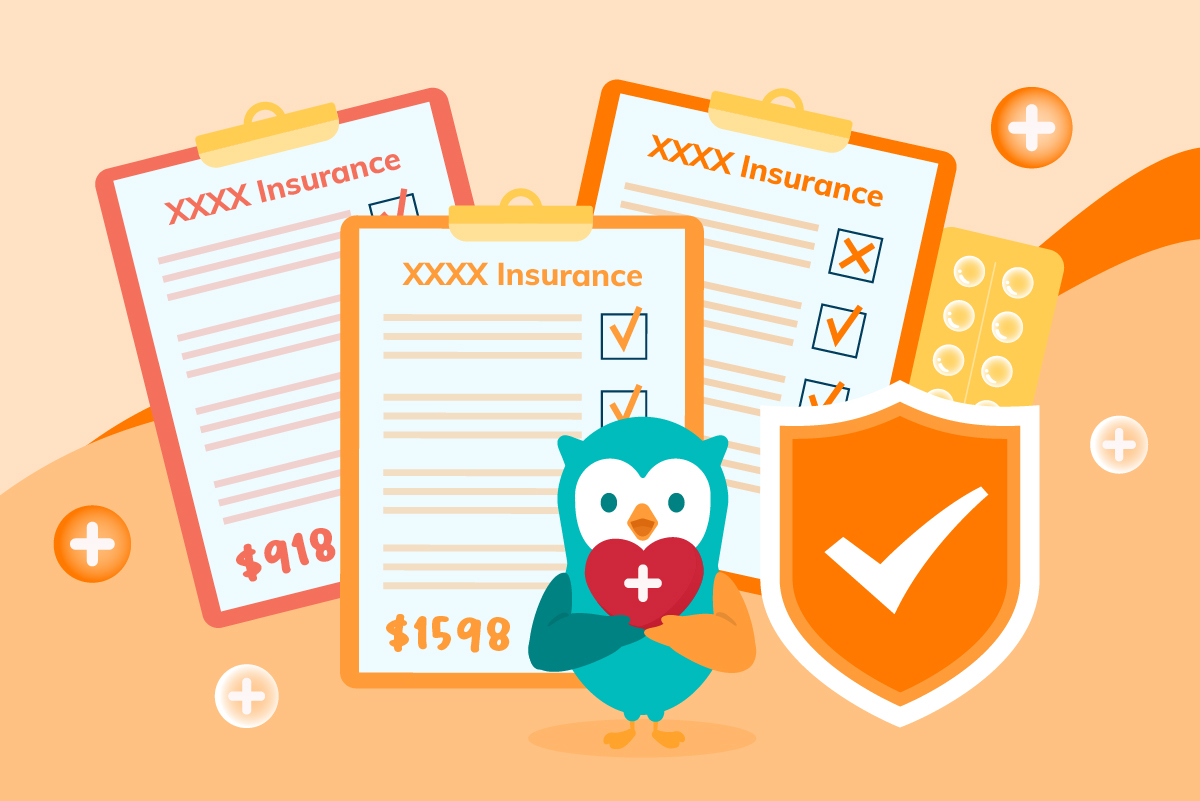Note: It was announced in November 2023 that MoneyOwl will be acquired by Temasek Trust to serve communities under a re-purposed model, and will move away from direct sale of financial products. The article is retained with original information relevant as at the date of the article only, and any mention of products or promotions is retained for reference purposes only.
______________
How do Your Healthcare Expectations with Medishield Life and Integrated Shield Plans affect you
You may have heard about the expansion of benefits offered under MediShield Life and the move away from full pay riders by providers of Integrated Shield Plans (IPs). What do these changes mean for you and what is your best course of action now? In this article, we breakdown the details into five key things you need to be concerned with.
MediShield Life was introduced in 2015 as a universal health insurance plan for all Singaporeans and Permanent Residents to help offset up to 80% of large hospital bills in highly subsidised wards. MediShield Life was automatically extended to all eligible individuals regardless of age or pre-existing conditions. To ensure that premiums remain affordable, MediShield Life has a few features embedded into it. This is depicted in the diagram below.

Source: MediShield Life Council Report 2020
Let’s use an example to unpack these components and their impact on you. As you can see in the table below, claim limits, deductibles, and co-insurance work together to keep premiums low by enforcing some form of personal responsibility to prevent over-consumption. This, however, means that MediShield Life does not cover 100% of your hospital bill.
| Total bill after government subsidy for 5-day C ward stay and treatment | $4,500 |
|---|---|
| Claim limit for normal ward x 5 days | $700 x 5 days = $3,500 |
| Total claimable amount | $3,500 |
| Less deductible | ($1,500) |
| Less co-insurance | ($450) |
| MediShield Life pays | $1,550 |
| MediSave and/or cash | $2,950 |
The recent changes to our national healthcare insurance will affect how much you can now claim from MediShield Life, your IP, and its riders, as well as the premiums you will have to pay. These are summarised in the five points below.
- Higher claim limits and benefits under MediShield Life
In 2020, the MediShield Life Council was set up to study the trends around medical inflation and how MediShield Life has been meeting its objective of helping Singaporeans defray large hospital bills. Based on their study, they recommend raising the claim limits for daily ward and treatment charges to keep pace with medical inflation and advancements and that these limits should be refreshed regularly. They also found out that patients tend to incur higher charges in the first two days of their hospital stay due to more diagnostic tests and investigations. That’s why they recommend higher claim limits for ward and treatments for the first two days of hospital stay.
What does this mean for me?
| Current | Revised | |
|---|---|---|
| Total bill after government subsidy for 5-day C ward stay and treatment | $4,500 | |
| Claim limit for normal ward x 5 days | $700 x 5 days = $3,500 | $1,000 x 2 days + $800 x 3 days = $4,400 |
| Total claimable amount | $3,500 | $4,400 |
| Less deductible | ($1,500) | ($1,500) |
| Less co-insurance | ($450) | ($450) |
| MediShield Life pays | $1,550 | $2,450 |
| MediSave and/or cash | $2,950 | $2,050 |
Using the same example from before, the revised claim limits means that MediShield Life will now cover 9 in 10 Class B2/C bills. This means more coverage and less out-of-pocket expenses for you. As deductibles are only paid once in any policy year, should this patient require another 5-day stay in the hospital, MediShield Life would be able to pay for close to 90% of the hospital bill.
- Lower pro-ration factor for private hospital claims under MediShield Life
Though MediShield Life was designed to meet most of the hospital bills for highly subsidised wards, you can still claim through MediShield Life for ward stays and treatments in higher class wards, i.e. B1, A class wards, or private hospital. However, to ensure equality in the claims payout across the risk pool, hospital bills from higher class wards are subject to a pro-ration factor to size it down to how much it would have cost if a similar treatment was sought in a B2/C class ward. In computing the bill claimable, the lower of the pro-rated bill or the claims limit will be used.
Previously the pro-ration factor for private hospital claims was set at 35% but now have been reduced to 25% following the recommendations from the council. They found that this better represented the actual bill differences between private hospitals and Class B2/C wards.
What does this mean for me?
| Current | Revised | |
|---|---|---|
| Total bill for 5-day private ward stay and treatment | $16,000 | |
| Pro-ration Factor | 35% | 25% |
| Claim limit for normal ward x 5 days = $4,400 (after revised claim limits) | 35% x $16,000 = $5,600 | 25% x $16,000 = $4,000 |
| Total claimable amount | $4,400* | $4,000* |
*The claimable amount is based on the lower of the claim limit for ward and treatment charges or the pro-rated bill.
This revision has made it more apparent that should you wish to have the choice to seek treatment in a private hospital, you should get yourself covered with a suitable IP and not depend on MediShield Life alone.
- MediShield Life and IP premium adjustments
To support these revised claim limits and other extensions of benefits, which include the removal of exclusions for treatments arising from attempted suicide, intentional self-harm, or drug addictions, MediShield Life premiums will see their first increase since it was introduced in 2015. According to the council report, these adjustments are required to also support the higher annual claims payouts that have increased by close to 40% between 2016 and 2019.
However, in view of these difficult times, the government will be providing additional COVID-19 premiums subsidies for two years until 2023. Thereafter, you can expect to see an increase of premiums between 11% to 28%, depending on your age group. Singaporeans who belong to the Merdeka or Pioneer Generation groups will continue to receive government support and are unlikely to see much increase in their premiums.
In conjunction with the expansion of benefits from MediShield Life, some private insurers have revised their premiums downwards. One such insurer is NTUC Income, which allows you to save up to 50% on your IP premiums, depending on your age group and coverage type. It’s worth noting that the highest savings are given to those on the Advantage and Basic plan who are below 30 years old.
What does this mean for me?
| Age | Current Medishield Life | Revised MediShield Life in 2023 | Current IP* (A class) | Revised IP* (A class) | % change in total premiums payable |
|---|---|---|---|---|---|
| 20 | $130 | $145 | $87 | $44 | -13% |
| 30 | $195 | $250 | $71 | $44 | 10% |
| 40 | $310 | $390 | $128 | $106 | 13% |
| 50 | $435 | $525 | $224 | $212 | 12% |
| 60 | $630 | $800 | $379 | $369 | 16% |
*Based on revised premiums for NTUC Enhanced IncomeShield Advantage Plan from 1 Apr 2021
- Increase in premium rebates for MediShield Life
A feature of MediShield Life that is not commonly known is its provision of premium rebates. This is because MediShield Life premiums are structured to be higher when you are young and given back as rebates in old age to make premiums more affordable. This helps to distribute premiums more evenly over your lifetime, as it is counter-intuitive to pay exponentially higher premiums in your old age when you are no longer working and receiving an income.
The council recommends increasing the premium rebates that policyholders will start to receive from age 66 onwards by 5% to defray the cost of insurance in their older years.

Source: MediShield Life Council Report 2020
- Removal of full pay riders for IPs
Since February this year, private insurers have signaled their intentions to gradually roll back on providing full pay riders for all its policyholders, a move which was welcomed by the Ministry of Health (MOH). Full pay riders have been instrumental in contributing to the hike of medical inflation since it was introduced in 1994 as it soaked up all the personal responsibility and accountability from the individual. This has resulted in a situation of over-consumption of medical services and over-servicing by medical professionals.
According to statistics from MOH, between 2015 and 2020, the compound annual growth rate of claims incidence was about 15% for full riders of private hospital IPs, and about 9% for full riders of restructured hospital IPs. For riders with some form of co-payment of private and restructured hospital IPs, this figure was close to 0%. Over the same period, the average bill size for claims from full riders was at least 20% higher than riders with some form of co-payment, for private and restructured hospital IPs.
Unsustainable medical inflation is not good for anyone in the long run as it results in healthcare costs becoming unaffordable for the masses, higher premiums for insurance, and greater healthcare spending by the government – monies which could be directed to meeting other national needs. As such, insurers will gradually shift those who have bought full pay riders before 31 March 2018 into riders which includes a 5% co-payment option. NTUC Income is the first insurer to make this move.
What does this mean for me?
| Based on Class A ward | Current (with full pay rider) | Revised (with 5% co-pay rider) |
|---|---|---|
| Total claimable amount | $20,000 | $20,000 |
| Less co-insurance (10%) | ($1,800) | ($1,800) |
| MediShield Life/IP pays | $16,200 | $16,200 |
| Rider pays | $3,800 | $2,800 |
| MediSave and/or cash | $0 | $1,000 (5% of $20,000) |
While this means some out-of-pocket expenses, the silver lining is that you get to pay up to 40% less premiums on these riders. Furthermore, as long as you seek treatment from within your insurer’s panel of specialists, your co-payment is capped at $3,000, notwithstanding that only 21% of private specialists in Singapore are represented in the panel according to the Singapore Medical Association.
In summary, MediShield Life benefits will continue to be refreshed and expanded with medical inflation and keep pace with medical advancements. Whatever that may not be claimable under MediShield today, could become covered in the future after further reviews and studies. Healthcare inflation is a very real issue in Singapore and we all need to do our part to help one another by stamping out over-consumption, otherwise, ever-increasing insurance premiums, which are unsustainable, is the only way to go.
What course of action do I have?
- If you are currently covered only by MediShield Life, you may want to think about your healthcare expectations and level of preferred care, then decide whether MediShield Life alone is adequate for your healthcare needs. Consider enhancing your coverage with an IP. If you are young and healthy, enhancing your coverage is not too costly and you can use between $300 – $900 per year from your MediSave to pay for the premiums. You can always downgrade your plan subsequently if the premiums become unaffordable for you. Generally, you shouldn’t spend more than 5% of your annual income on health insurance premiums. There are currently seven insurers who provide IPs, each trying to differentiate from the other based on plan features and premiums payable. For example, if you have existing conditions such as diabetes, high blood pressure, or high cholesterol, Raffles Shield may still cover you for these conditions albeit with some loading. If you would like the option for overseas treatment and to have coverage for certain alternative treatments, Aviva MyShield could be your preferred choice. Speak to an independent client adviser to help you make sense of which IP is best for you.
- If you currently hold a full pay rider, you don’t have to do anything as your insurer will gradually move you to a co-pay rider, typically at your next policy renewal date. However, if you prefer, you can already start to make the transition yourself to save on paying higher premiums.
- If you currently have an IP and have difficulty paying the annual premiums, you can also consider switching to a different provider or downgrading your plans to make them more affordable. However, before switching, do take note that your new insurer will not cover you for any pre-existing illnesses. As such, if you have a pre-existing illness, this is not a decision to be taken lightly.
Still have questions? Speak to us today and one of our fully salaried client advisers would be happy to help you make an informed decision regarding your health insurance needs.




